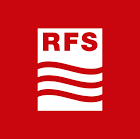Going Underground: delivering in-tunnel connectivity
Metro deployments are one of our specialties at RFS, our equipment lives in 41% of the world’s metro systems, serving a combined daily ridership of 134 million. Metro tunnels are a particularly challenging environment for installing communication equipment; hundreds of feet underground and in tight and difficult spaces. Yet, despite the difficulties, when it comes to ensuring safety and meeting consumer connectivity expectations, addressing the issue of in-tunnel connectivity is unavoidable for Metro operators.
Although there are challenges, at RFS we have a huge focus on developing the best ways to overcome them and perhaps the best way to show how we do this, is by looking at one of our recent projects.
Case Study: Glasgow metro
The project
The Glasgow Subway opened on December 14, 1896 and is the third-oldest underground metro system in the world after the London Underground and the Budapest Metro. It is currently undergoing a full modernization which is due for completion in 2022 and covers everything from station renovation to enabling driverless trains.
The challenge
As part of the modernization, the communication infrastructure is undergoing a major upgrade; futureproofing it for years to come. As with all metro installations, this upgrade brings with it a number of challenges. The tunnel diameter is extremely narrow (3.35m wide), its irregular, there are numerous existing cables and pipes, and very limited space between the tunnel walls and the train cars, all of which makes RF propagation difficult.
The project RFS would work on was to deliver the connectivity to enable to use of driverless trains. The solution would need to deliver mission critical connectivity while overcoming the physical challenges of in-tunnel installations.
The solution
RFS was selected to deliver the project following benchmarking trials where our RADIAFLEX radiating waveguide, a unique and innovative solution for in-tunnel wireless applications in the 5-6 GHz band, was found to have significantly better performance when compared to alternative solutions. The installation proposed by RFS also involved far fewer active components; the system was able to serve a kilometer distance between access points. This brings two benefits for the Glasgow metro; lower initial costs and a system that will require far less maintenance, reducing total cost of ownership. The cable is designed to sit in tunnels for decades without the need for upgrade or attention, giving the reassurance of a futureproofed solution.
With the technology selected, the next part of the solution was to optimize the installation to deliver the best possible performance. The purpose of the deployment; to support the mission-critical connectivity needed to power driverless metro systems that rely on Wi-Fi, added to the challenge. To guarantee performance, we undertook several simulations at our Hannover site to perfect the RF propagation in a way that was compatible with the specific shape and formation of the Glasgow tunnels. Following significant research, we designed a system that will run at 5.8GHz on the RADIAFLEX solution, in duplex configuration, with a fail-safe architecture that avoids any single or double point of failure. This will not only support the use case of facilitating driverless trains, but offers a low maintenance, high performance system that will serve the subway for years to come.
Metro modernization is happening across the globe as subway operators look to take advantage of new technology to drive efficiency and improve the experience for their passengers. At RFS our teams are constantly testing and developing solutions to help metro operators make the most of the latest technology in a way that delivers ROI and is truly futureproofed in one of the most challenging environments for connectivity.
To hear more about our metro connectivity solutions and the projects we are working on, get in touch with Axel Schroeder, Commercial Product Manager, Wireless Indoor Solutions.


